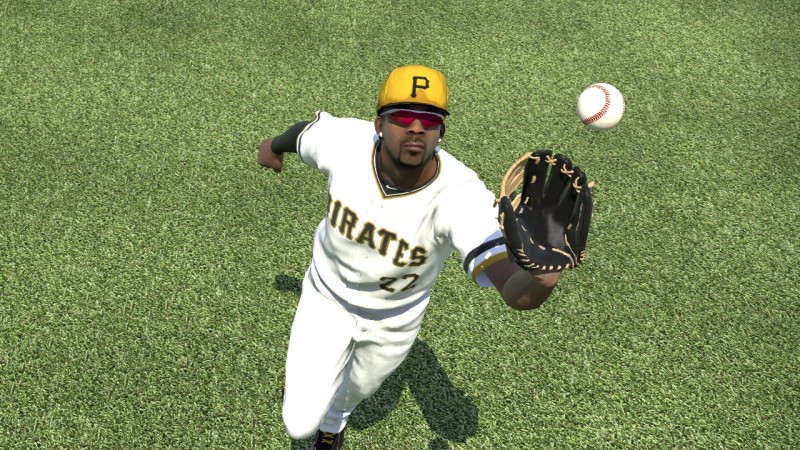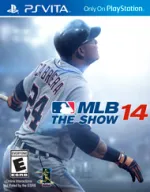MLB 14 The Show

My review of MLB 14: The Show is in progress. I've spent the majority of this week playing the game, and in the process, learning that the Cubs are just as bad in this game as they are in real life. The Show has always had great attention to detail, and sadly, for those who bleed Cubbie blue, Wrigley Field is a place where dreams are crushed, and the game of baseball is often transformed into a comical circus of errors.
My search for ways to help the Cubs win games has revealed a number of significant changes between this and last year's game. I've detailed the five biggest ones in no particular order below:
6. Sacrificing Full Control = More Games Played
One of the biggest complaints people have with baseball in general is that games move slow. According to an article printed by the ESPN last year, the average baseball game length is just under three hours. An article printed by the Wall Street Journal broke that down to just under 18 minutes of action. MLB 14: The Show producer Ramone Russell says that the average length of a game played in the The Show is roughly an hour and a half. The average time spent completing a game in Madden, FIFA, or NBA 2K is about a half hour.
In this year's The Show, the time dedicated to finishing a game can be greatly reduced if you turn some of the control over to a new simulation option called Quick Counts. when this option is activated, a count is generated before you step into the batter's box. This count is based on two year's of data pulled from MLB.com that factors in match-ups, fatigue, the game situations, and numerous other things. Quick Counts put players in more 3 ball counts for both pitching and batting, leading to more walks on both sides and more realistic pitch counts. Sony has adjusted the fatigue levels to reflect these higher numbers. The one Quick Count oddity I've seen so far: You'll never see a clean 0-0 count. The generated counts always have at least one pitch thrown.
With Quick Counts active, I'm flying through franchise mode, and find myself being more selective at the plate with three ball counts – something I rarely saw in year's past due to my aggressive approach at the plate.
5. The Rosters Are A Mess
Odds are, you won't be happy with your team's lineups, bench, and bullpen until Sony releases the newest roster update on April 8. Things I've noticed: Mike Olt, the Cubs' starting third basemen who HAS had MLB experience, is nowhere to be found in the game. As always, trades occurring over the last couple of weeks, are not yet reflected in the game. Rookies fall into this same category. All of this should be fixed on April 8.
4. The Ball Is Alive
The ball has noticeable weight to it now, meaning you'll see it drift in the wind and carry when walloped. These changes add difficulty to fielding and excitement to balls hit to the wall. Many home runs look to be ordinary outs at first. The catch position indicator appears on the field, but slowly sides back onto the warning track, up onto the wall, and then over it – all while your player is giving chase.
3. Year-to-Year Saves
Once you retire your copy of MLB 14: The Show to your game shelf or delete it from your hard drive, make sure you hold onto your save files. Your progress in franchise mode and Road to the Show will continue in MLB 15: The Show. That's right, you no longer have to start over. We still don't know what happens to seasons that are only partially complete, if you can import rookie players into your franchise at the turn of the season, or if cloud saves can be carried over between the PS3 and PS4 versions.
2. Tighter Gameplay
Batting and pitching mechanics function just like they did last year, but little touches like a new dynamic camera shifts while batting give you a better look at balls put into play, allowing for quicker input in baserunning and fielding. Baserunning is completely redone with new animations and A.I., but doesn't offer up much different in terms of gameplay for the average game. Fielding expands again with 50 new animations and a completely redone catcher animation suite. So far, I've only seen a handful of fielding plays that looked odd. The animations are usually spot on, even the transitional ones.
1. Road To The Show
You no longer get a free pass to an MLB team's minor league affiliate. You must first prove your worth in a three-game Topps Amateur Showcase. Your performance in this series dictates when you'll be drafted. If you don't want to end up on the Cubs, you can select which team you want to be drafted by. Depending on how you fared, you may want to revisit the draft later, which is handled by going back to college. The options are one-year junior college. two-year junior college, three-year university, or four-year university. Going to college also gives you additional training points to spend on improving your attributes.
I still have a long ways to go to see how long it will take to get the MLB squad, but I'm guessing higher round draft picks will spend more time in the minors and will get less playing time. One nice change, your player is no longer tasked to complete arbitrary advancement goals. All advancement goals are removed from the game. Experience points are once again earned through the game, but in this era of pay-to-play gaming, players can also use real money to purchase additional points. The way this is handled is a little evil. The game lets you add as many points as you want, but doesn't alert you that you've gone over the total you have to spend. When this happens, you are taken to a screen that asks if you want to buy additional points.

Get the Game Informer Print Edition!
Explore your favorite games in premium print format, delivered to your door.
- 10 issues per year
- Only $4.80 per issue
- Full digital magazine archive access
- Since 1991










